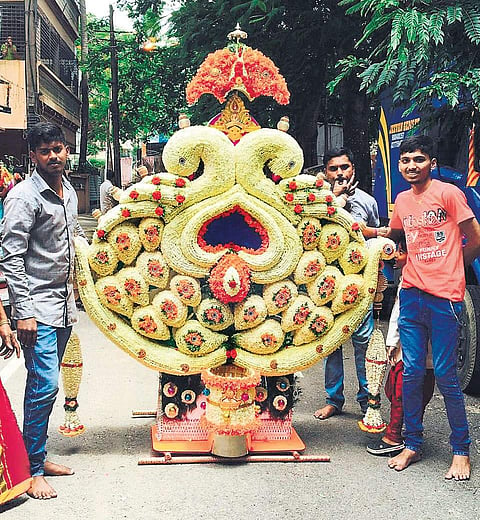

BENGALURU: While the city’s changing often brings a burst of nostalgia among old-time residents, occasions like Oora Habba serve as reminders that amid the busy pockets of Silicon City thrives Namma Bengaluru. The three-day festival, which began on Monday, is said to have been in existence for 300 years, and is celebrated once every three years. The event involves five villages in South Bengaluru – Siddapura, Kanakan Palya, Nagasandra, Ediyuru and Bhairasandra – that celebrate the visit of deity Patalamma to her mother’s house.
“I remember the festival being celebrated since I was a little girl. I have seen my parents and grandparents participate in the meetings where elders would decide the dates. Now, I see my grandchildren take part in this with the same excitement,” Nagamma, a 75-year-old resident of Nagasandra near Basavanagudi, said.
The localities wear a festive look, as festoons of mango leaves flicker in the wind and banana stems adorn electric polls, tree trunks and pillars outside houses. The area is lit with glittering bulbs.
“This festival has been celebrated for time immemorial, maybe three centuries,” Ramakrishna, a priest at Anjaneya temple in Siddapura, said. The legend goes that Poojamma and Plegamma are the deities of Siddapura, while Patalamma of Kanakana Palya (Jayanagar) is the daughter of Siddapura, which is her mother’s place. The event heralds her visit to Siddapura every three years.
Residents of Siddapura, cutting across caste lines, welcome her with a new silk sari, and offer her sweet pongal, and other delicacies made of jaggery. She is also given flowers and bangles. On the first day, people take out a procession of tambittu aarti, made of rice flour and jaggery, for Aanjaneya Swami. They take it to Muneswara the next day. Deities from other villages also visit her, and non-veg meal is served to all on the last day. She is then sent back with a procession of lamps.
A competition for the best aarti is also held each time. “I have grown up watching my parents participate in it. Our family always wins the prize for the best-decorated aarti,” Renuka Ravi, a resident of Nagasandra, said.
“People from various areas should come to witness this festival. We should not let our culture die,” Bhargavi Ravi, a 21-year-old business analyst, said.